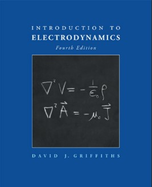Solution Found!
A radio tower rises to height h above flat horizontal
Chapter 11, Problem 23P(choose chapter or problem)
Problem 23P
A radio tower rises to height h above flat horizontal ground. At the top is a magnetic dipole antenna, of radius b, with its axis vertical. FM station KRUD broadcasts from this antenna at (angular) frequency ω, with a total radiated power P (that’s averaged, of course, over a full cycle). Neighbors have complained about problems they attribute to excessive radiation from the tower—interference with their stereo systems, mechanical garage doors opening and closing mysteriously, and a variety of suspicious medical problems. But the city engineer who measured the radiation level at the base of the tower found it to be well below the accepted standard. You have been hired by the Neighborhood Association to assess the engineer’s report.
(a) In terms of the variables given (not all of which may be relevant), find the formula for the intensity of the radiation at ground level, a distance R from the base of the tower. You may assume that b ≪ c/ ω ≪ h. [Note:We are interested only in the magnitude of the radiation, not in its direction—when measurements are taken, the detector will be aimed directly at the antenna.]
(b) How far from the base of the tower should the engineer have made the measurement? What is the formula for the intensity at this location?
(c) KRUD’s actual power output is 35 kilowatts, its frequency is 90 MHz, the antenna’s radius is 6 cm, and the height of the tower is 200 m. The city’s radioemission limit is 200 microwatts/cm2. Is KRUD in compliance?
Questions & Answers
QUESTION:
Problem 23P
A radio tower rises to height h above flat horizontal ground. At the top is a magnetic dipole antenna, of radius b, with its axis vertical. FM station KRUD broadcasts from this antenna at (angular) frequency ω, with a total radiated power P (that’s averaged, of course, over a full cycle). Neighbors have complained about problems they attribute to excessive radiation from the tower—interference with their stereo systems, mechanical garage doors opening and closing mysteriously, and a variety of suspicious medical problems. But the city engineer who measured the radiation level at the base of the tower found it to be well below the accepted standard. You have been hired by the Neighborhood Association to assess the engineer’s report.
(a) In terms of the variables given (not all of which may be relevant), find the formula for the intensity of the radiation at ground level, a distance R from the base of the tower. You may assume that b ≪ c/ ω ≪ h. [Note:We are interested only in the magnitude of the radiation, not in its direction—when measurements are taken, the detector will be aimed directly at the antenna.]
(b) How far from the base of the tower should the engineer have made the measurement? What is the formula for the intensity at this location?
(c) KRUD’s actual power output is 35 kilowatts, its frequency is 90 MHz, the antenna’s radius is 6 cm, and the height of the tower is 200 m. The city’s radioemission limit is 200 microwatts/cm2. Is KRUD in compliance?
ANSWER:Step 1 of 3
Part a
We are required to calculate the expression for the radiation intensity at ground level.
Given:
The height of the tower .
The given question can be understood from the figure below.
The expression for radiation intensity at ground level is,
From the figure above,
Now, the expression for total radiated power
Therefore, the intensity of radiation,
